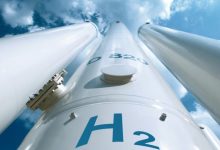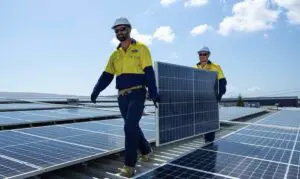Leading environmental group WWF Australia has published a new ‘position paper’ on hydrogen, which outlines why the technology presents such an enormous economic opportunity for Australia, but also why it needs to be based around renewables rather than fossil fuels.
Virtually all hydrogen production at present is undertaken using fossil fuels such as gas and coal as an input, and is generally supplied to the chemical industry. Such production is not emissions free, with carbon dioxide left as a by-product of fossil fuel derived hydrogen production.
Just over half of the world’s hydrogen production is used for the production of ammonia, a key input for fertiliser production, with hydrogen also used in the oil refining, and explosives industries.
However, the focus on hydrogen now is the role it can play in the decarbonisation of industries like transport, thermal heat and the power generation sector, and renewable hydrogen – produced by splitting water using electricity generated from wind and solar – carries no associated greenhouse gas emissions.
WWF Australia’s position statement says a renewable hydrogen industry must be paired with a sufficiently robust ‘guarantee of origin’ scheme, and that this growth must be undertaken concurrently with wider efforts to shift energy use on to zero emissions sources.
It cited analysis produced by Bloomberg New Energy Finance that suggests the market for green hydrogen has the potential to grow to become $700 billion a year industry, and Australia is well placed to seize this economic opportunity as a supplier to key Asian markets including Japan, South Korea and Singapore.
“Australia has a huge opportunity to be a global leader in renewable hydrogen, but only if we act now,” WWF Australia’s Energy Transition Manager Nicky Ison said.
“Hydrogen is already an established industry and currently used globally to manufacture fertiliser, explosives and other chemicals and commodities and accounts for 1% of global carbon pollution.
“WWF has been advocating for the acceleration of renewable hydrogen as part of our Renewable Recovery campaign, including the development of Hydrogen Hubs, one of which was announced by the Federal Government last week.”
WWF Australia is concerned by proposals being pushed by the Morrison government, and Australia’s chief scientist Dr Alan Finkel, that Australia pair fossil fuel derived hydrogen with carbon capture and storage technologies, as a way to make early progress in boosting production and establishing supply chains.
The Morrison government has recently announced a range of funding measures to support the development of carbon capture and storage technologies, which it says could be used to effectively remove emissions from the production of fossil fuel hydrogen, but would rely on a technology that is widely considered to be unproven.
WWF pointed to an analysis prepared by the International Renewable Energy Agency that said it was likely that funding and resourced being directed to fossil fuel hydrogen was diverting funding that could be better directed to accelerating the development of renewable hydrogen.
“Supporting the expansion of hydrogen from coal and gas is synonymous with supporting the expansion of the fossil fuel industry, which is incompatible with a safe climate and the need to decarbonise our economy,” the WWF report says.
“If CCS is required for global decarbonisation, for example, for industrial emissions capture, it should be limited to sectors where there are no renewable alternatives. This is not the case in the hydrogen sector.”
The WWF report says while a future hydrogen industry would only add a small amount of demand for Australia’s freshwater resources, the industry needs to explore the use of recycled and wastewater supplies.
“To grow the scale needed to bring renewable hydrogen down the cost curve, we should start with decarbonising the existing hydrogen industry. In doing so, Australia has the opportunity to take a significant share of what is projected to be a $700 billion per year global industry,” Ison added.








